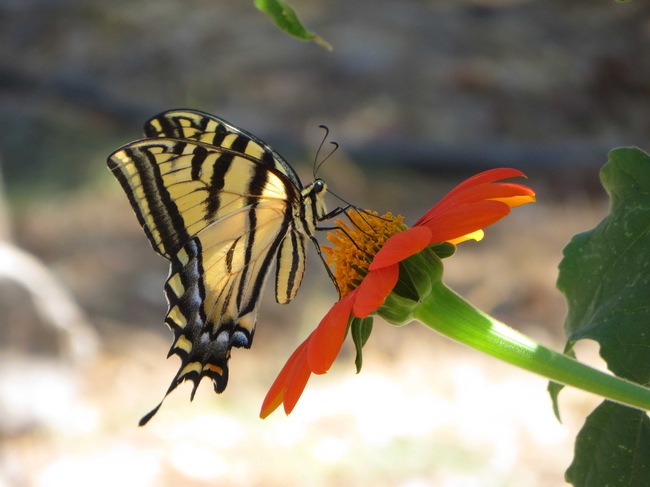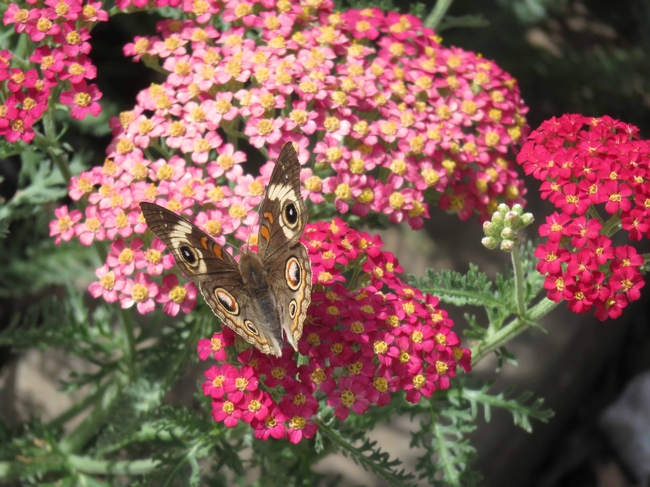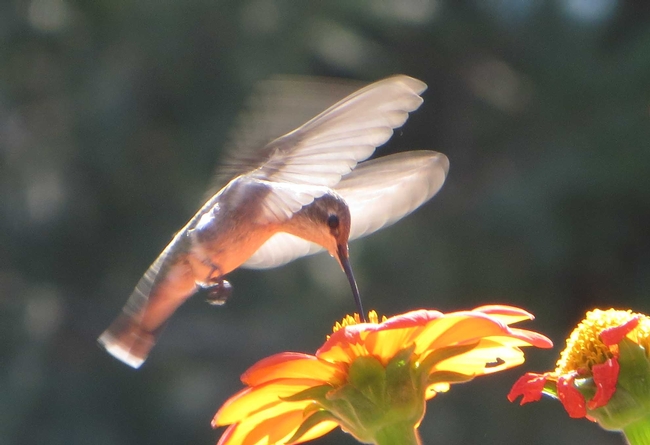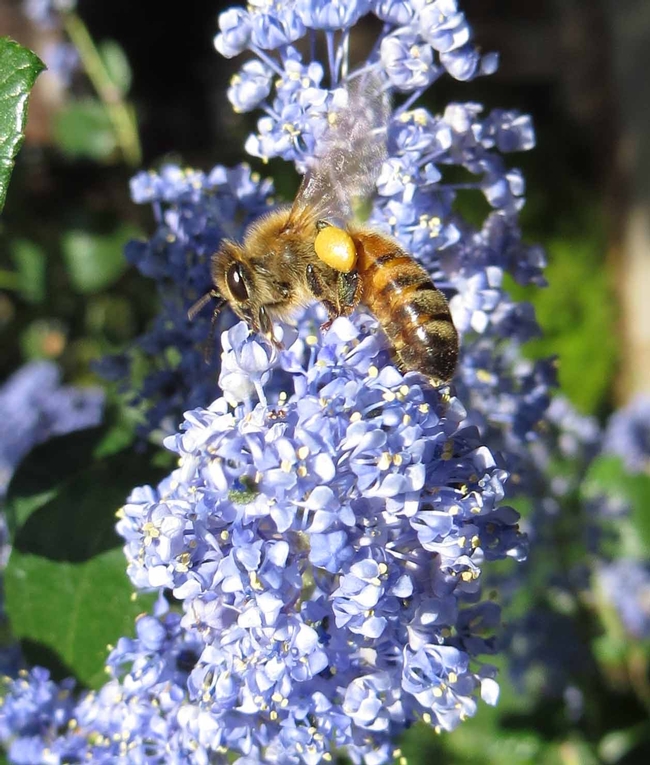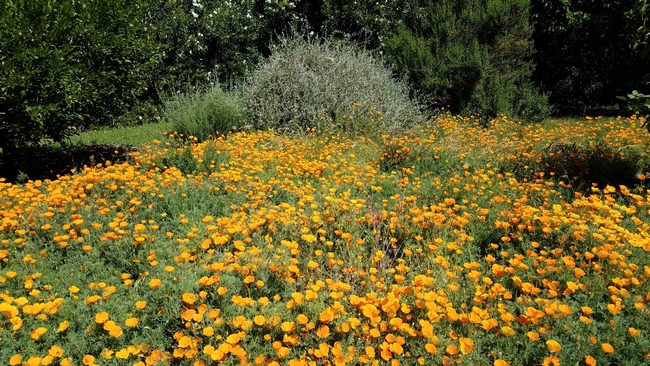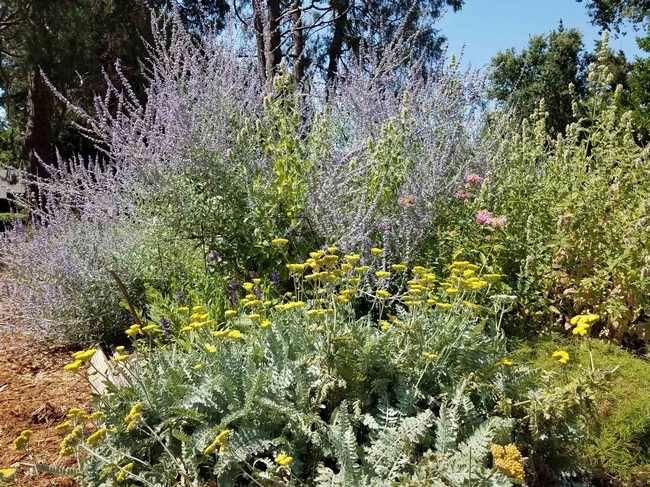The decline in numbers of European honeybees, bumblebees and other native pollinators has been well documented for over a decade. Research exploring pollinator decline began in earnest in 2006 when Colony Collapse Disorder, affecting honeybees, first appeared. In 2006 and 2007 managed honeybee colonies experienced a loss rate of over 30 percent. There was great concern that the loss of pollinating honeybees could negatively affect agricultural production including our local almond crop. Although managed honeybee colonies rebounded (thanks to improvements in hive management), hive losses from April 2018 to April 2019 reached 40%, the highest loss since monitoring began, primarily due to reduced effectiveness of Varroa mite control materials.
Swallowtail on tithonia by J. Alosi
Neonics are a nicotine-derived class of pesticides developed for use on both farm crops and landscape plants. Approved by the EPA in the 1990's, this group of neurotoxins are the most commonly applied group of insecticides in the world.
Buckeye butterfly on paprika yarrow by J. Alosi
No direct link has been found between neonics and the Colony Collapse Disorder of honeybees. Although not clearly understood, neonics may weaken the honeybee immune system, thus making the bees more susceptible to pathogens and diseases. Research has also found that bumblebees and solitary bees are affected differently than honeybees. A study at Worcester Polytechnic Institute in Massachusetts discovered that queen and male bumblebees suffer much higher rates of mortality compared to that of worker bees. This negatively affects the ability to form new colonies.
Anna's Hummingbird by J. Alosi
Neonics are long lasting; they can persist in the soil for months, but can last years in woody plants. When used to protect corn and other seeds, they can remain in the soil to be absorbed later by other untreated plants.
Honeybee on Ray Hartmann ceanothus by J. Alosi
Because many products approved for home and garden use can be legally applied at rates significantly higher than the rates approved for agricultural crops, home gardeners may unwittingly be exposing pollinators to toxic levels of pesticide. Neonic pesticides found in common home and garden products include imidacloprid, clothianidin, thiamethoxam, acetamiprid, and dinotefuran.
Patch of pesticide-free California poppies by J. Alosi
Patch of pesticide-free flowering plants by J. Alosi
The Butte County UC Master Gardeners are part of the University of California Cooperative Extension (UCCE) system, serving our community in a variety of ways, including 4H, farm advisors, and nutrition and physical activity programs. Our mission is to enhance local quality of life by bringing practical, scientifically-based knowledge directly to our community. For more information on UCCE Butte County Master Gardeners and their upcoming events, and for help with gardening in our area, visit https://ucanr.edu/sites/bcmg/. If you have a gardening question or problem, call our Hotline at (530) 538-7201 or email mgbutte@ucanr.edu.
|
Examples of neonicotinoid ingredients found in common garden insecticides:
|
- Imidacloprid
- Clothianidin
- Thiamethoxam
- Acetamiprid
- Dinotefuran
|
